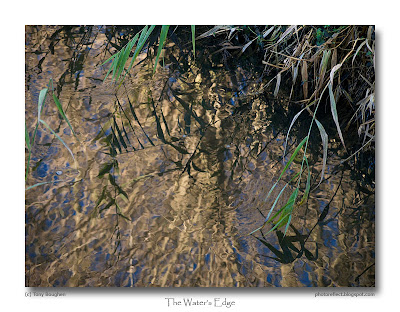 click photo to enlarge
click photo to enlargeWhen the Pre-Raphaelite painters turned their attention to nature they produced work that rejoiced in the minutiae of leaves, flowers, branches, rocks and water. They saw this verdant world like a child does, and examined it closely, marvelling at the nooks and crannies, insects and dark places. Paint was richly worked to show the detail of their subjects. Works such as "A Study, in March" (1855) by John William Inchbold (1830-1888), or the better-known "Ophelia" (1852 ) by John Everett Millais(1829-1896) exemplify these characteristics.
Critics of the Pre-Raphaelites - and there are many - see a lack of focus in this approach. They complain that the compositions do not direct the eye to a main subject (if one even exists). Camille Paglia talks about the "Keatsian ardor" with which the painting of nature was pursued, and compares it unfavourably with "High Romance energy" and "dynamic process", suggesting that it is only one step removed from the Symbolist decadence of Gustave Moreau. But, like many critics, she lets her preferences get in the way of seeing this aspect of Pre-Raphaelite work for what it is - a different and straightforward way of looking at nature, a reaction to "Sir Sloshua Reynolds" and what had gone before in English painting. And, whilst she is right to say that "part triumphs over whole", there is pleasure to be had in the simple revelation of nature and the decorative effect that this can produce. This is largely art for the eye and the emotional response: it isn't as completely cerebral as some painting. Critics of this aspect of the Pre-Raphaelites' work are like those who decry the unaccompanied folk song but praise the conservatoire setting of the tune, denying themselves the different enjoyment that each offers.
I was reflecting on this as I processed my image. Did it suffer from a lack of focus? It was taken on a walk that I regularly undertake from my house, part of which follows a stream that is reed-lined in summer. The other day only a few reeds were left standing, and the water was reflecting the nearby trees and the blue sky. I took a shot of the water's edge, to capture both the sharp foliage, and the softer reflections that were being distorted by the ripples and eddies. Does the image lack a main subject? Yes, but I think it offers distinct and the indistinct interest for the searching eye.
photograph & text (c) T. Boughen
Camera: Olympus E510
Mode: Aperture Priority
Focal Length: 98mm (196mm/35mm equiv.)
F No: f5
Shutter Speed: 1/30
ISO: 100
Exposure Compensation: -0.7 EV
Image Stabilisation: On